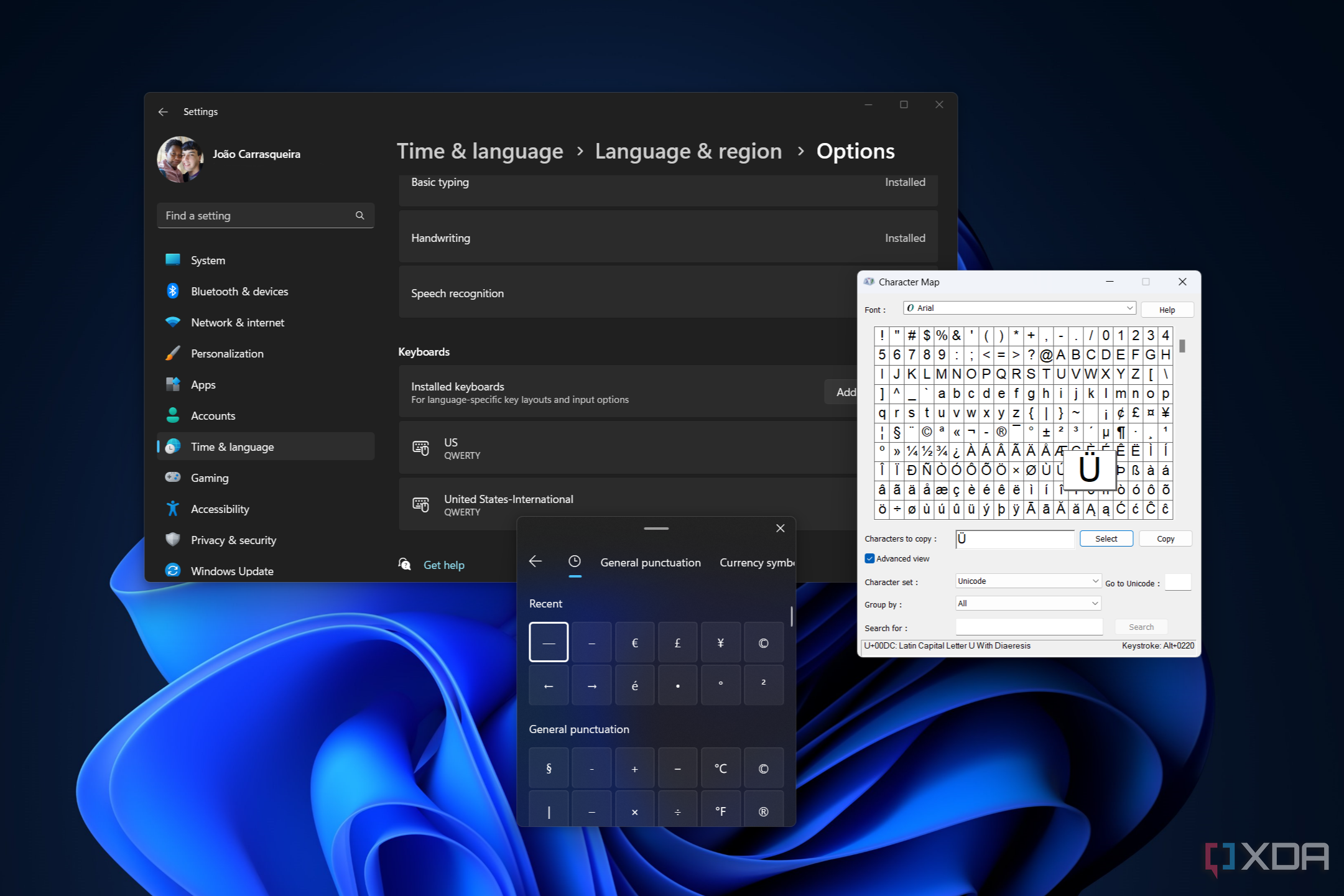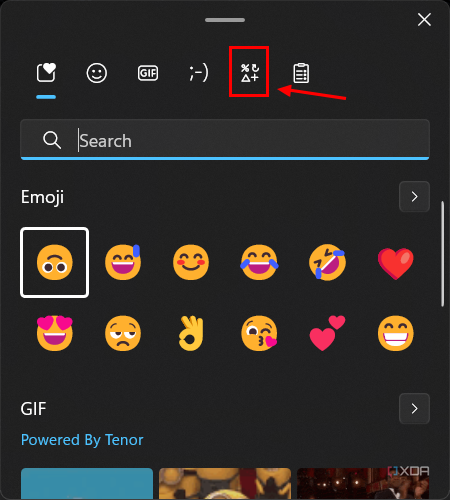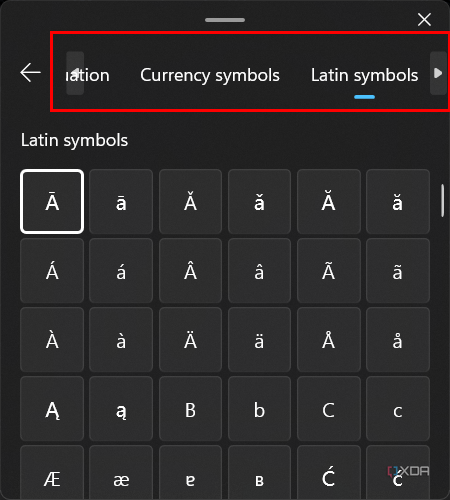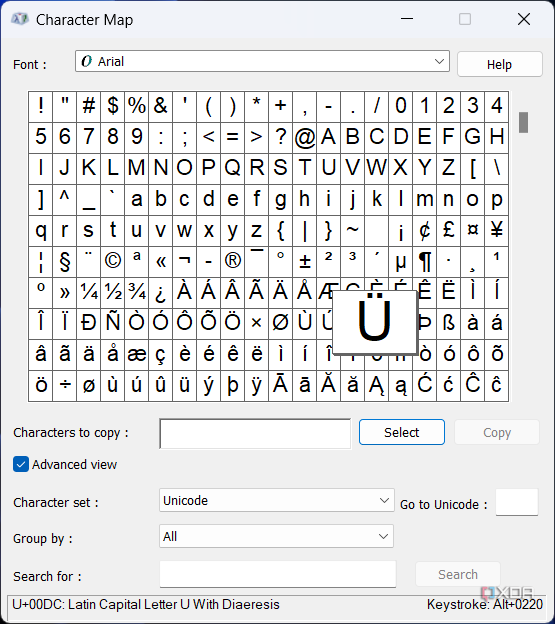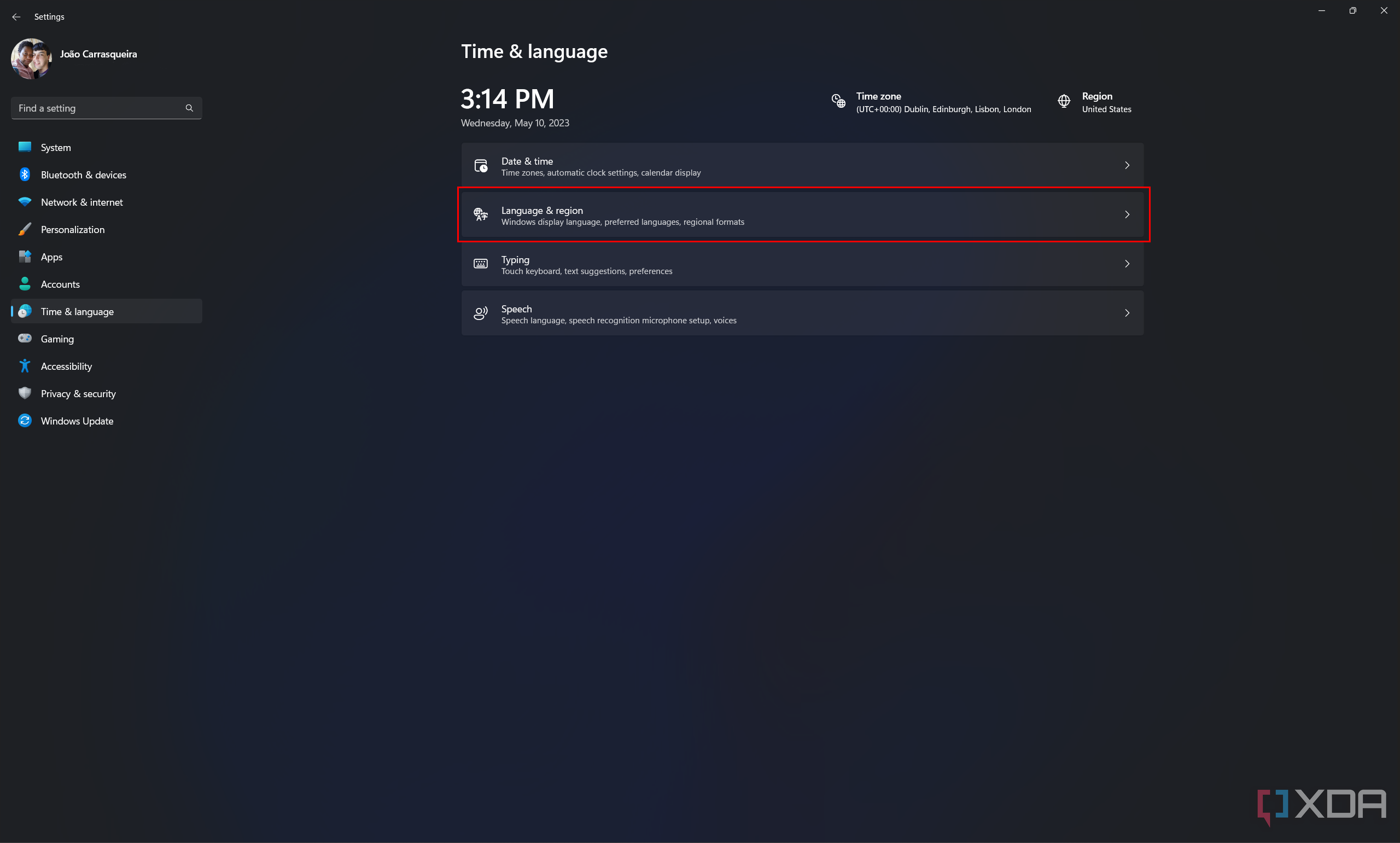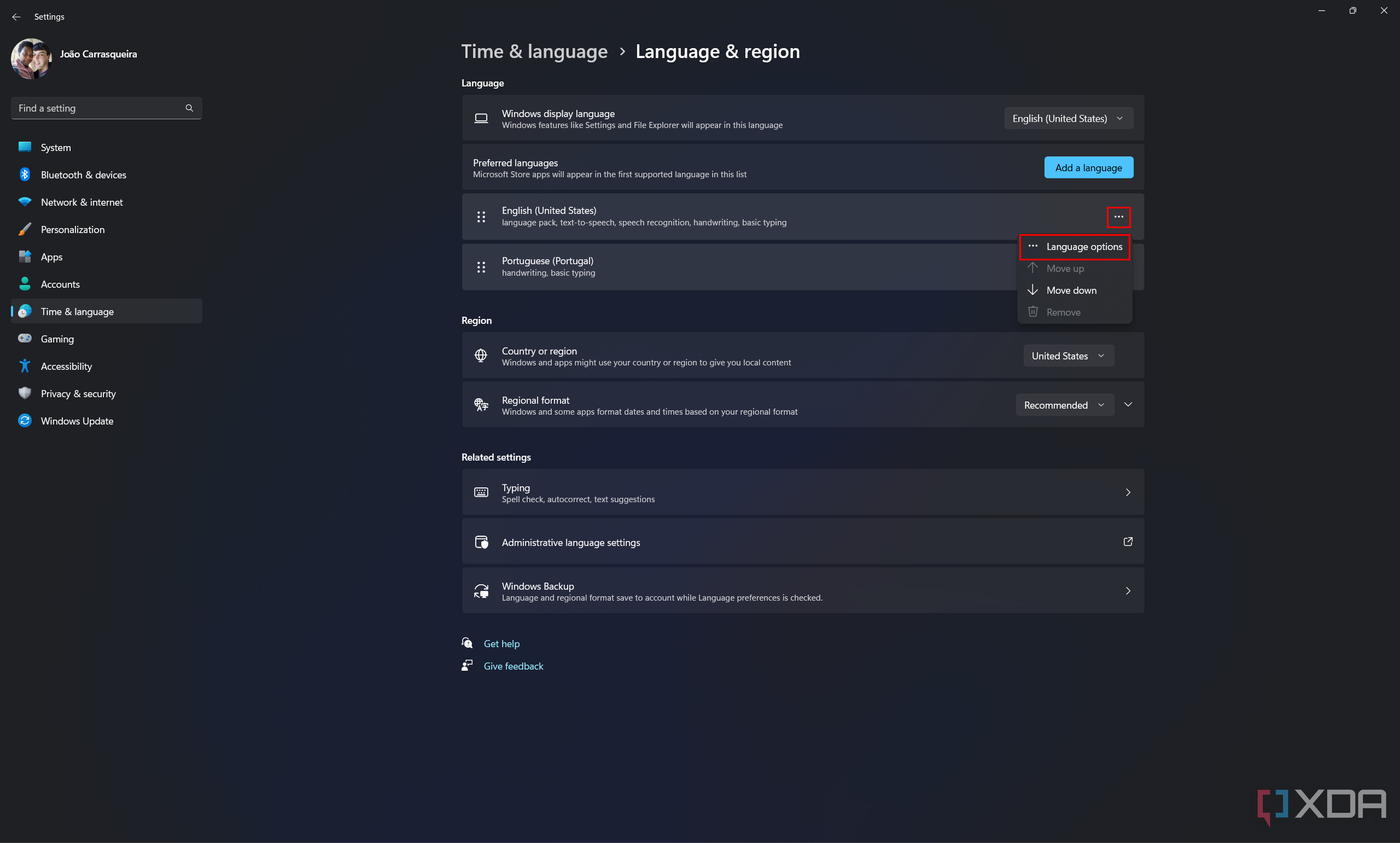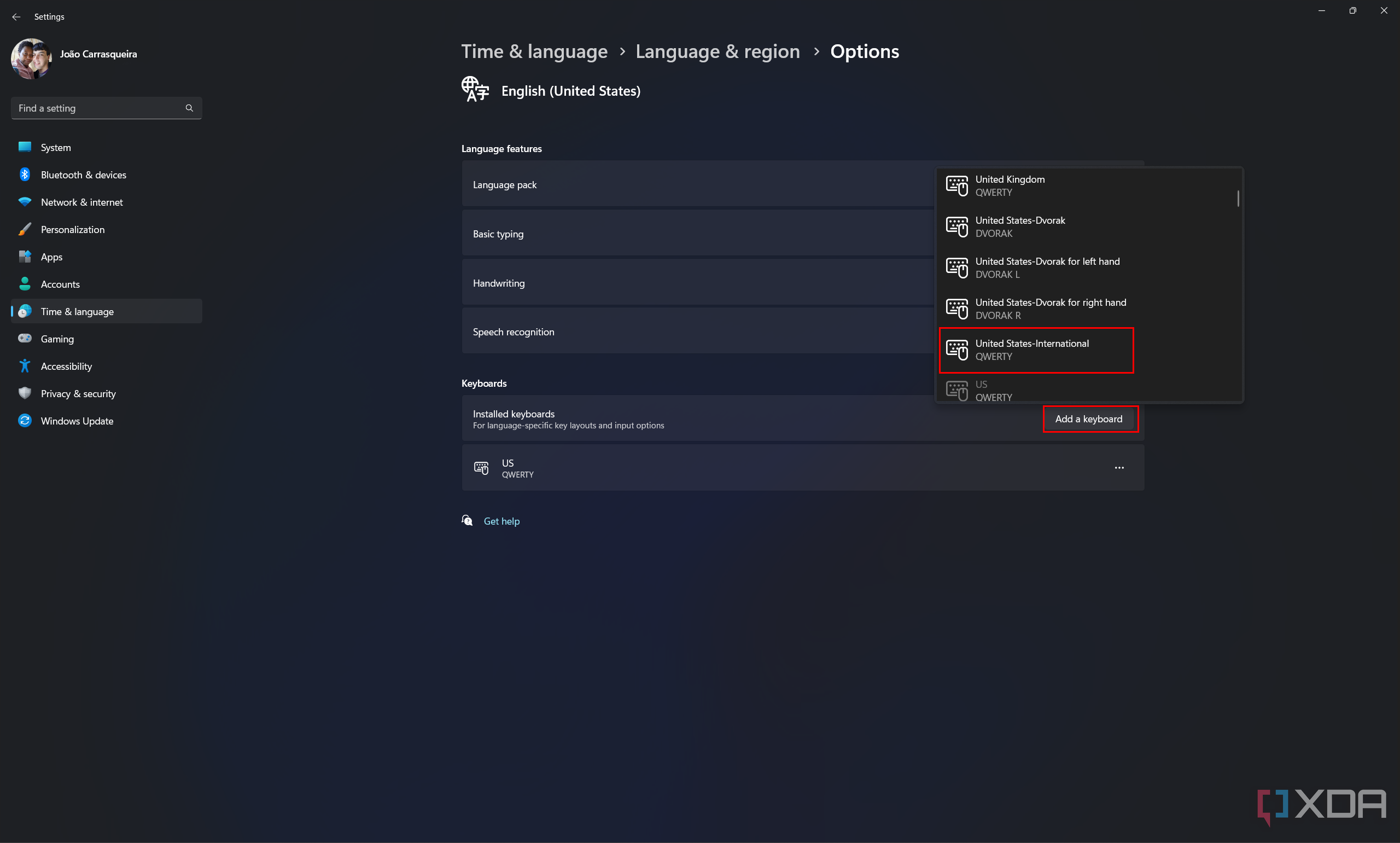Anyone who's used a computer or gone online has probably run into a character or symbol they've never seen before or don't know how to enter on their keyboard. There's even one in the byline for this article. If you've ever wondered how you can use these kinds of special characters, whether they're letters or other symbols, you'll be glad to know that there are actually a few ways to use them in Windows 11.
As a Portuguese writer that spends most of my time writing in English, it's very common for me to hear questions or comments about the ã in my name, which uses an accent called a tilde (~). It's not really used in English, but it's very prominent in Latin languages like Portuguese and Spanish. Because it's not commonly used in English, U.S.-style keyboards don't usually let you use a tilde with a letter, and that goes for most other accents, too. Thankfully, you can work around this, and use all kinds of other symbols, too.
How to use special characters with the emoji panel on Windows 11
Windows 10 introduced a very welcome feature, the emoji panel, and despite its commonly used name, there's a lot more to it. It actually contains quite a few characters, including symbols like Latin characters, math symbols, punctuation, and a lot more.
- Press Windows + . (period) on your keyboard to open the emoji panel. You can also press Windows + V, which opens the clipboard history panel.
-
Switch to the Symbols panel (the second-to-last option)
-
You can use the navigation at the top to choose the kind of symbol you're looking for, such as General punctuation or Latin symbols.
- Click the symbol you want to enter in the text field.
- Repeat the process for any other symbols you want to use.
Recently-used symbols are shown in a dedicated section at the top, so you don't constantly have to search for the ones you use more often. My most common use for this panel is actually to use an em dash (—), which isn't included on most keyboards, but there are a ton of characters here.
How to use special characters with the Character Map
If you're more of a fan of the old-school tools in Windows, or if you'd like to copy a string of special characters, you can also use the Character Map, which has been a part of Windows for many years. It's not quite as intuitive, but it might be preferred for some. Here's how it works:
- Open the Start menu and search for Character Map. It should be the first search result.
-
(Optional) Choose the font you want to use the character in. Some fonts may not have every special character.
You can also enable the Advanced View checkbox to see advanced filtering and grouping options, such as choosing a character set.
-
Click a symbol to preview it in a larger size.
- Click Select to add the symbol to the Characters to copy box at the bottom.
- Once you have all the characters you want, click Copy.
- Paste the character(s) wherever you want to use them.
Using the United States International keyboard layout
Finally, we have my favorite way to use special characters, particularly when it comes to Latin symbols. The methods above work, but they can be a bit time-consuming, and when I have to write in both Portuguese and English using a U.S. keyboard, it's not the most convenient. Thankfully, if you're in the U.S., you can still use characters like ã or ñ without having to go through those steps.
It's all thanks to the United States International keyboard layout, which is available in the Windows 11 settings. This uses the same key layout you already know, but it adapts the behavior of certain keys so that you can use these accents with compatible letters. Here's how it works:
- Open the Settings app.
- Head to the Time & language section on the left side.
-
Click Language & region.
-
Click the ellipsis button next to English (United States) or whatever language you're using, and choose Language options.
- Under the Keyboards section, click Add a keyboard.
-
Scroll down to United States-International and click it to add it to your active keyboard layouts.
- To switch keyboard layouts, press Ctrl + Shift on your keyboard. The Windows taskbar shows your current active language and keyboard layout.
With this layout enabled, you can now press an accent key before a letter to use the respective accented character. Here's how to use some common accents from different languages:
- Acute accent (´): Press the ' (apostrophe) key before the letter. Example: á, é, ó
- Grave accent (`): Press the `~ (grave accent/tilde) before the letter. Example: à
- Tilde (~): Press Shift + `~ before the letter you want to enter. Example: ã, õ, ñ
- Circumflex (^): Press Shift + 6 before the letter you want to enter. Example: â, ê
-
Umlaut (¨): Press Shift + " (quotation mark) before the letter you want to enter. Example: ü, ö.
If you try to use an accent with an incompatible letter, both the accent and the letter will be entered as separate characters. Some keys, like the apostrophe or the quotation mark, will enter the usual symbols, rather than the accents, when not attached to a letter. If you'd like to use a quotation mark or apostrophe while using the United States-International keyboard layout, you can press Space after pressing the respective key.
These steps will make it much easier to incorporate accented characters in your day-to-day typing, but if you write mostly in normal English, you can always press Ctrl + Shift to change back to the regular keyboard layout with the behavior you're used to. These characters can be useful for a variety of languages, including Portuguese, Spanish, French, and German (where the umlaut is most common).
If you're in the U.K., you can achieve similar effects with the United Kingdom Extended keyboard layout, but the key combinations required to use certain accents are a bit different.
If you'd like to learn more about other Windows 11 features and capabilities, check out how to use touch gestures or Start Menu folders in the most recent versions of the OS.

